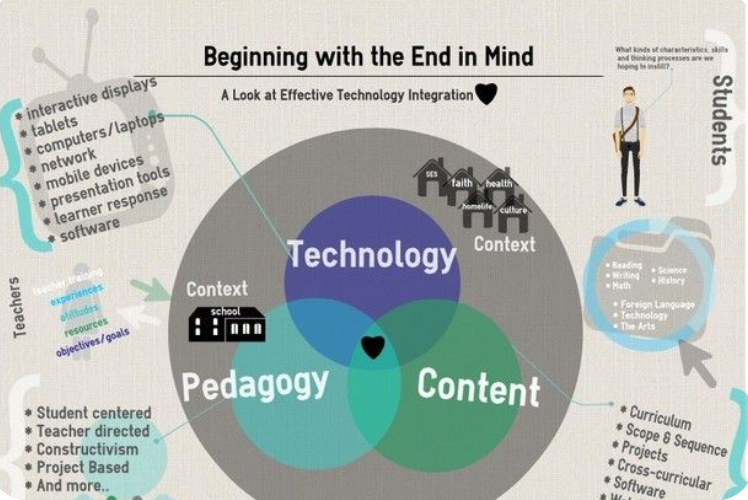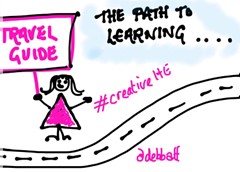What is Technology?
In preparation for thinking about technology-enhanced learning environments (TELEs), I first answer the question, “what is technology?” This expansive question results in different answers, reflecting various perspectives and priorities. Although in this course, our focus is on technology for learning, I cannot shake my commitment to a much broader definition, thus Roblyer’s (2012) description resonates; technology is us – our tools, our methods, and our own creative attempts to solve problems in our environment. Robyer’s description allows for flexibility in outlining technology as a means (using tools and methods) to solve (contextualized) problems.
The Teacher as Designer

I similarly reflect on what I think a learning designer, such as myself, should “do” when creating a TELE. I extract two primary elements for consideration: the pedagogical goal and my perspective as an experienced “expert” teacher, and expand with many others. Not surprisingly, there is no clear answer, only multiple considerations within a heuristic approach of what I think will satisfy the goal as best as possible, given all the different contextual constraints. Teaching and designing can be examined reductively to elements of practice, curricular content, technological tools, and student needs, but it is ultimately a creative endeavor that defies a prescriptive approach
Designing a Trip: A Metaphor for TELE

Previously, in the “Unpacking Assumptions” discussion, I envisioned the characteristics demonstrating the ‘good’ use of technology. I use this to create a travel metaphor where the ideal technologically-enhanced learning environment (TELE) is akin to a perfect travel excursion. My trip begins with a specific destination with some targeted purpose(s). With the expert support of a travel agent to help me, I build my optimal experience. The travel agent ensures that I have the necessities covered for my trip, yet also provides me with various enriching choices to keep me engaged and interested. The travel agent understands the importance of providing activities that reflect the unique environment, including practical and affordable transportation, and providing opportunities to understand, share, and compare cultural aspects of the local community. The travel agent gives me structured yet flexible options whenever feasible. When my trip is over, I have a suitcase of souvenirs and a head full of memories that help me remember, apply, and share my experiences.
The symbolism within my metaphor is mapped in below in Figure 1.
| My Travel Experience | My Learning Experience |
| Travel Destination (purpose) | Learning Objective (pedagogical goal) |
| Travel Agent | Educational Instructor |
| Basic Necessities (meals, rooms) | Foundational Knowledge and Skills |
| Selection of In-House Activities or Elective Excursions (build your own itinerary) | Choice of Learning Activities to For Varied Interests or Abilities Activities (autonomy, personalization, UDL principles) |
| Exploration (self-guided or tour guide) | Active Learning (scaffolded to varying degrees) |
| Relevant Local Attractions | Contextually Authentic |
| Mode of Transportation | Technological Tools |
| Cultural Events & Learnings | Social Constructivist Component(s) |
| Residuals from the Experience (memories, souvenirs, new appreciations) | Growth in Knowledge, Skills, and Affect, |
| Sharing With and Support From Travel Companions | Collaborative Learning Community |
In summary, just as there is no single representation of an ideal travel experience, the same can be said of the quest to construct the ideal TELE experience. Rather, each is a unique and complex blend of skillfully crafted elements that provide the best possible options for the recipient.
References
Roblyer, M.D. & Doering, A. (2012). Integrating educational technology into teaching, (5th Ed.). Upper Saddle River, New Jersey: Prentice Hall.
